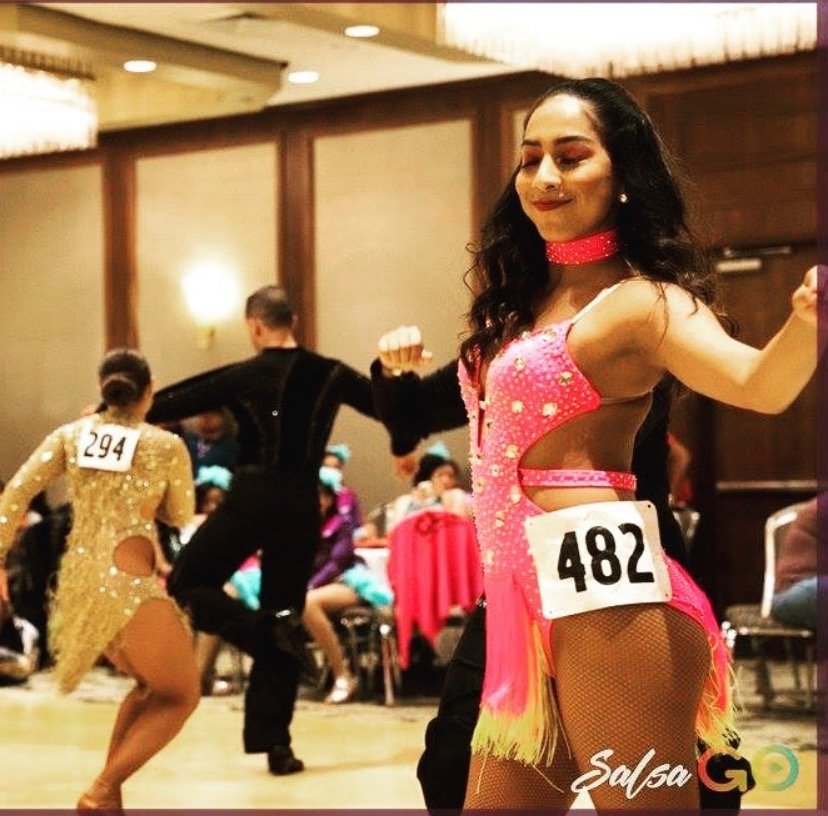Features Overview
DEFINITIONS
1. Amateur: Defined as a student or person who does not make a living as a Dance Instructor, Performer, Dance Competitor or Dance Adjudicator and who never receives financial compensation for these activities.
2. Rising Star/Semi-Pro: Defined as a person who receives financial compensation as a Dance Instructor, Performer, Dance Competitor or Dance Adjudicator, but who does these activities on a part time basis and makes the majority of their income in another profession.
3. Professional: Defined as a person who receives financial compensation as a Dance Instructor, Performer, Dance Competitor or Dance Adjudicator, and who makes the majority or entirety of their income from these activities.
4. Pro-Am Division: Defined as one Professional Dancer (Instructor) dancing with one Amateur Dancer (Student) to form a partnership, or a group of Amateur and Professional dancers performing together to form a team.
5. Amateur Division: Defined as two Amateur dancers or students dancing together to form a partnership, or a group of Amateur dancers performing together to form a team.
6. Professional Divison: Defined as two Professional dancers performing together to form a partnership, or a group of Professional dancers performing together to form a team.
7. Same Sex Divisions: Defined as an all Male or all Female Partnership or Team.
8. Teen Division: Defined as a couple whose partners are between 13-17 years of age.
9. Pre-Teen Division: Defined as a couple whose partners are12 years of age and under.
10. 40+ Division: Defined as an Amateur couple whose partners are both over 40 years of age, or a Pro-Am Couple whose Amateur partner is over 40 years of age.
11. Heated Divisions: Defined as a category where all partners or couples dance together on the stage or floor to music that is selected by the organization or deejay. Heats generally last 1.5 minutes and are Just Dance divisions. All Heated Divisions for this competition are Just Dance divisions (see below).
12. Showcase Divisions: Defined as a category whereby the partnership or team showcases choreography, and dances to the music of their choice. Showcase divisions mean the competing couple or team will do a solo performance.
13. Just Dance: Defined as dance only. No lifts, tricks, flares or drops permitted whatsoever. This is a lead/follow division, rather than choreographed, designed to show the ability to connect with one's partner and display timing, musicality and creativity to whatever music is played.
14. Tricks, Dips, Drops, Leverage Moves and Flares: A trick is defined as any movement that requires the support of the other partner to maintain. This is regardless of whether the feet remain on the floor or not.
15. Open Division: Means the division is open to any competitor, whether they are Amateur, Rising Star or Professional. Amateurs will not lose Amateur status if they choose to compete in the Open Divisions.
RULES
A. Partnerships in all Showcase Divisions will be designated as one male and one female partner unless specifically designated as a same gender division.
B. Time for Showcases: All Showcase Routines (ProAm, Amateur or Professional) should be no less than 1.5 minutes and no more than 2.5 minutes long. This includes optional entrance and/or exit music. These Time Limits apply for all Showcase routines in all Styles of Dance. Couples will have no more than 20 seconds to get into place for performance. Any choreography prior to the beginning of the music will be counted toward the overall timing of the performance. Likewise, dancers will have a maximum of 20 seconds at the conclusion of the performance to exit the floor..
C. Props are not allowed.
D. Salsa Cabaret or Bachata Cabaret Division: Tricks are allowed. Couples can choose to dance either On1 or On2, but must maintain consistent to that timing for the duration of the routine. Recognized timing for this competiton is 1-2-3, 5-6-7. Routines must be 50% recognizable salsa. The remaining 50% can be made up of tricks, flares, dips and side by sides (shines). Note: If the word “Classic” is not designated in the title of the Showcase division, it means the Couple or Team can elect to include lifts and tricks in the routine, but it is not a requirement.
E. "On1" , "On2" and Classic Bachata Showcase Divisions: One foot must remain on the floor at all times even during tricks. If both feet of either partner leave the floor via the assistance of the other partner, it will be considered a lift and there will be a 10% deduction from the final score. A maximum of 3 tricks/dips or flares are permitted for the routine. A maximum of 8 bars/32 Beats/4 counts of 8 are allowed for continuous turns. More than this will result in a penalty of 10% off off the final score. All Music for Classic style divisions must be a minimum of 80% recognizable music for that style of dance. Note: If the word “Classic” is not designated in the title of the Showcase division, it means the Couple or Team can elect to include lifts and tricks in the routine, but it is not a requirement.
F Team Divisions: May utilize actual lifts and overheads. The same rules apply to this division as the Cabaret Division. Routines must be 50% Salsa Dancing. Amateur Teams must consist of All Amateur/Student Dancers. Pro Am Teams can have a maximum of 50% Professionals.
G. Music Format: Music for all Showcase Performances to be supplied in CD format. Music will be submitted and competition line up order to be drawn at the competitors meeting. Please see our Information page regarding music by clicking on Music CD Guidelines as written above.
H. Tricks, Dips, Drops, Leverage Moves and Flares: A trick is defined as any movement that requires the support of the other partner to maintain. This is regardless of whether the feet remain on the floor or not.
I. Continuous/Multiple Turns: Contestants are allowed a maximum of 8 Bars/32 Beats/4 Counts of 8 are allowed for continuous turns. More than this will result in a penalty of 10% off the final score.
J. Costumes: Costumes are not required, but are highly recommended. All costumes should be in good taste with all private parts covered by non-transparent material.
CRITERIA
Scoring of the Showcase Routines will be based upon the following criteria, and will be weighted in the scoring room in the following manner:
I. 20% Timing: Recognized Salsa Timing is designated for this competition as 1-2-3, 5-6-7. Competitors can choose to break ON 1 or ON 2, but must maintain consistency for the duration of the routine. The direction of the break step can be either to the front or the back, as long as the timing of the break is consistently maintained (either 1 and 5, or 2 and 6). The majority of the routine should show recognizable Salsa Timing.
II. 15% Musicality: Couples will demonstrate their ability to creatively work with the timing of their individual music. This can be done in a variety of ways, including patterns, footwork, “hits”, tricks, etc.
III. 15% Technique: Technique is reflected through balance, placement and line. This refers also to general techinique for partner dance, where the movement is “grounded”, and there is clarity of proper weight changes from foot to foot. Technique and/or body styling that is specific to Salsa Dance. Movement should appear to be both clear and effortless.
IV. 15% Difficulty: Reflected by difficulty of patterns, turns, intricacy of shine movements, and level of tricks, dips, drops and flares.
Examples: The amount of turns done on both double and single foot. How intricate were the shines? In the cabaret division, what was the difficulty of the lift-work? Was it properly executed? How about jumps, kicks, extensions? Any movements requiring exceptional balance, flexibility or strength? In order to get credit for any of these things, the movement must be successfully executed.
V. 15% Partnering/Connection: This is reflected in the lead/follow aspect of the dance. Are partners truly connected, or are they merely executing choreography while holding hands? Synchronicity during side by sides or shines will also help determine the score in this category.
VI. 10% Choreography: The couple’s interpretation of the music. Good choreography should contain clever turn patterns and shines. All choreography should be musical, and couples should show a good usage of the space itself. Originality is a factor here.
VII. 10% Overall Presentation: You Will Be Judged By Your Overall Presentation. This includes costuming, showmanship, and also good sportsmanship.



